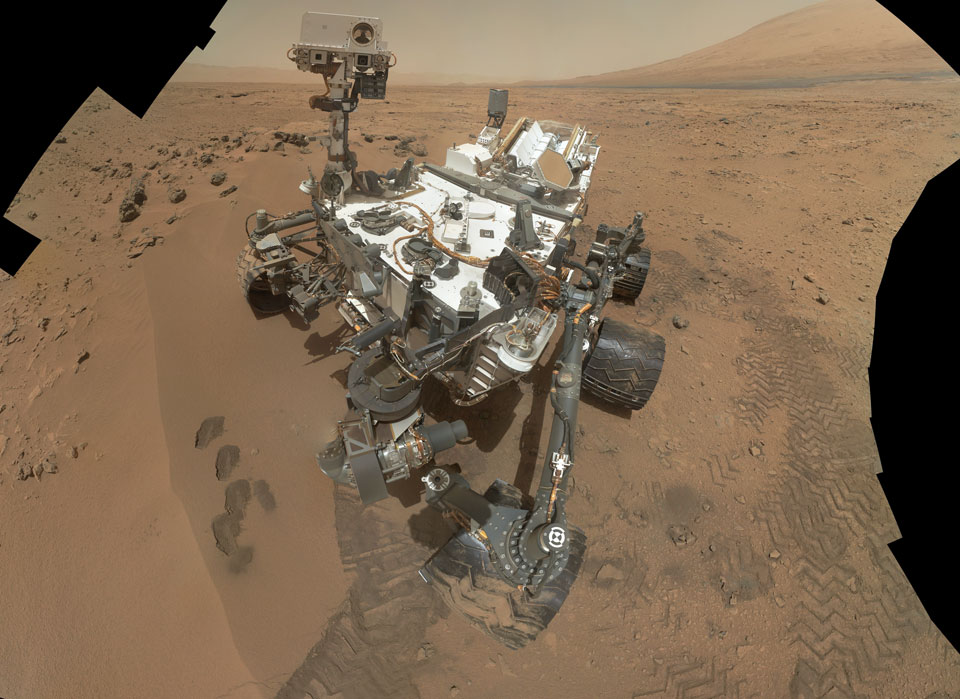
Image Credit: NASA, JPL-Caltech, MSSS, MAHLI
Explanation: What's in this smooth soil on Mars? In late October,
NASA's robotic Curiosity rover
stopped near a place dubbed Rocknest as it continues
to explore Gale Crater
on Mars. Rocknest is the group of stones seen near the top left of the above image -- just
to the left of Curiosity's
mast. Of particular interest was the unusually smooth patch of soil named
Wind Drift seen to the left of Curiosity, which was likely created by the Martian wind blowing fine particles into Rocknest's
wake. The above
image shows part of Mt. Sharp in the background
to upper right, and, oddly, almost the entire rover itself, digitally
reconstructed from 55 frames while digitally removing an extended arm. Curiosity
scooped several sand
samples from Wind Drift into its Chemistry and Mineralogy
Experiment (CheMin) and the Sample
Analysis at Mars (SAM) laboratory for a detailed analysis. Preliminary
data from the soil indicates a small amount of one-carbon organic material the
origin of which it presently unknown. Although the organic
signal might be just contaminants from Earth, the exciting possibility that
it could be from Mars itself will remain a focus of future
exploration and research.
Aucun commentaire:
Enregistrer un commentaire